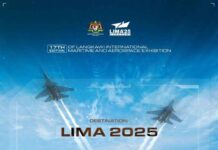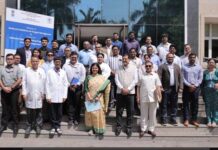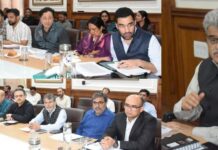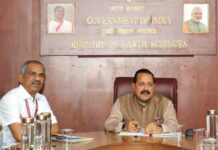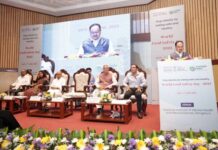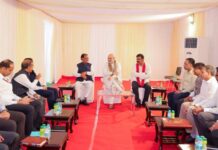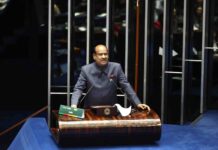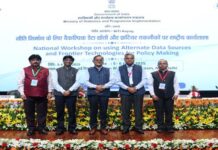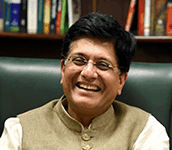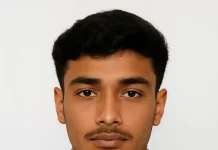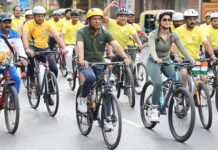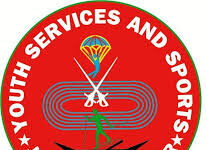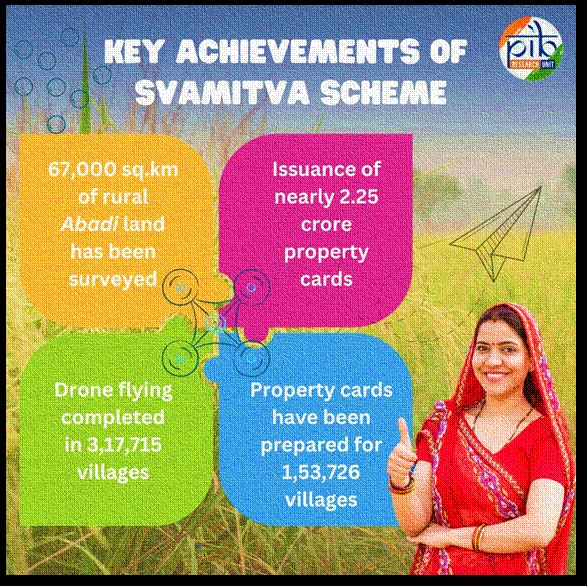The Prime Minister remarked that five years ago, the SVAMITVA scheme was launched to ensure that the people residing in the rural areas receive their property cards. He remarked that different states refer to property ownership certificates by various names, such as Gharoni, Adhikar Abhilekh, Property Card, Malmatta Patrak, and Awaasiya Bhumi Patta. “Over 1.5 crore people have been issued SVAMITVA cards in the past 5 years”, said Shri Modi. In today’s program, he added that more than 65 lakh families had received these cards. The Prime Minister remarked that under the Swamitva Yojana, around 2.25 crore people in villages have received legal documents for their homes now. He extended his heartfelt congratulations and best wishes to all the beneficiaries.
Remarking that the 21st century presents numerous challenges, including climate change, water scarcity, health crises, and pandemics, the Prime Minister highlighted that another significant challenge the world faces is property rights and the lack of legal property documents. The Prime Minister cited a United Nations study that revealed many people in various countries do not have proper legal documents for their property. He added that the UN emphasized that reducing poverty requires people to have property rights. The Prime Minister mentioned a renowned economist who wrote a book on the challenge of property rights, stating that the small amount of property owned by villagers is often “dead capital.” He added that this means that the property cannot be used for transactions, and it does not help increase the family’s income. Shri Modi remarked that India was not immune to the global challenge of property rights. He noted that despite having property worth millions of crores, villagers often lacked legal documents, leading to disputes and even illegal occupation by powerful individuals. He added that without legal documents, banks also kept their distance from such properties. The Prime Minister highlighted that previous governments did not take concrete steps to address this issue. He said that in 2014, the Government decided to tackle the challenge of property documentation through the Swamitva Yojana. The Prime Minister emphasized that no sensitive government could leave its villagers in such distress. Elaborating on the Swamitva Yojana, he said it involved mapping houses and lands in villages using drones and providing legal documents for residential properties to villagers. He added that the benefits of this scheme are now visible. Referring to his earlier conversation with beneficiaries of the Swamitva Yojana, who expressed how the scheme has transformed their lives, Shri Modi remarked that they now receive assistance from banks for their properties, and their satisfaction and happiness are evident. The Prime Minister considered this a great blessing.
“India has over 6 lakh villages, with drone surveys completed in nearly half of them”, remarked the Prime Minister. He highlighted that after receiving legal documents, lakhs of people had taken loans from banks based on their property, starting small businesses in their villages. He added that many of these beneficiaries are small and medium farmer families, for whom these property cards have become a significant guarantee of economic security. The Prime Minister noted that Dalit, backward, and tribal families were most affected by illegal occupations and long court disputes. He remarked that with legal certification, they would now be free from this crisis. He mentioned an estimate that once property cards are issued in all villages, it will unlock economic activities worth over 100 lakh crore rupees. The Prime Minister emphasized the substantial capital that will be added to the country’s economy.
“Our Government is earnestly working to implement Gram Swaraj on the ground”, exclaimed Shri Modi and highlighted that the Swamitva Yojana had significantly improved village development planning and execution. He remarked that with clear maps and knowledge of populated areas, development work planning will be precise, eliminating wastage and obstacles caused by poor planning. The Prime Minister noted that property rights will resolve disputes over land ownership, such as identifying Panchayat land and grazing areas, thereby empowering Gram Panchayats economically. He emphasized that property cards will enhance disaster management in villages, making it easier to claim compensation during incidents like fires, floods, and landslides.
Noting that land disputes were common for farmers, and obtaining land documents is challenging, often requiring multiple visits to officials and leading to corruption, the Prime Minister said that to reduce these issues, land records were being digitized. He highlighted that Swamitva and Bhu-Aadhaar are foundational systems for village development. He added that Bhu-Aadhaar provides a unique identity to land, with around 23 crore Bhu-Aadhaar numbers issued, making it easy to identify land plots. “Over the past 7-8 years, approximately 98% of land records have been digitized, and most land maps are now digitally available”, added Shri Modi.
Emphasising Mahatma Gandhi’s belief that India’s soul resides in its villages, the Prime Minister stressed that the true implementation of this vision had occurred over the past decade. He highlighted that more than 2.5 crore families had received electricity in the last 10 years, mostly in villages, while over 10 crore families had gained access to toilets, and 10 crore women had received gas connections through Ujjwala scheme, with the majority living in villages. He further added that more than 12 crore families had received tap water in the past five years, and over 50 crore people had opened bank accounts, primarily in villages. The Prime Minister noted that more than 1.5 lakh Ayushman Bharat Arogya Mandirs were established, mostly in villages. He emphasized that for decades, millions of villagers, especially Dalit, backward, and tribal families, were deprived of basic amenities and now these families were the primary beneficiaries of these facilities.
Highlighting the unprecedented efforts that were made in the past decade to improve roads in villages, the Prime Minister informed that since the launch of the Pradhan Mantri Gram Sadak Yojana by Atal Ji’s government in 2000, approximately 8.25 lakh kilometers of roads was constructed in villages, with nearly half of them built in the last 10 years. The Prime Minister mentioned the Vibrant Village program to enhance connectivity in remote border villages. Emphasising that providing internet in villages has also been a priority, Shri Modi remarked that before 2014, fewer than 100 Panchayats had broadband fiber connections, but in the past 10 years, over 2 lakh Panchayats were connected by broadband internet. He added that the number of Common Service Centers in villages has increased from less than 1 lakh to over 5 lakh in the same period. The Prime Minister noted that these figures represent the delivery of modern amenities and facilities to villages, which were previously only seen in cities. He added that this had not only improved convenience but also boosted economic strength in villages.
Stressing that 2025 had begun with significant decisions for villages and farmers, the Prime Minister highlighted the continuation of the Pradhan Mantri Fasal Bima Yojana, under which farmers had received claims amounting to nearly 2.25 lakh crore rupees. He noted another decision regarding DAP fertilizer, whose prices had risen globally. Shri Modi underscored that the government had allocated thousands of crores to ensure affordable fertilizer for farmers. He added that over the past decade, approximately 12 lakh crore rupees was spent on providing affordable fertilizer to farmers, nearly double the amount spent in the decade before 2014. The Prime Minister emphasized that under the Pradhan Mantri Kisan Samman Nidhi, around 3.5 lakh crore rupees have been transferred to farmers’ accounts, demonstrating the Union Government’s commitment to farmers’ welfare.
“Women’s empowerment has been central to every major scheme over the past decade, recognizing their significant role in building a developed India”, emphasised Shri Modi. He highlighted that initiatives like Bank Sakhi and Bima Sakhi had provided new opportunities for women in villages. He added that the Lakhpati Didi Yojana had made over 1.25 crore women lakhpatis. Shri Modi underlined that the Swamitva Yojana had strengthened women’s property rights, with many states including wives’ names on property cards alongside their husbands. The Prime Minister noted that under the PM Awas Yojana, most houses provided to the poor were registered in women’s names. He emphasized the positive coincidence that Swamitva Yojana drones were helping women secure property rights. He added that the mapping work in the Swamitva Yojana was being done by drones, and under the Namo Drone Didi Yojana, village women were becoming drone pilots, assisting in agriculture and earning additional income.
The Prime Minister remarked that the Swamitva Yojana had empowered villagers, potentially transforming rural life in India. He emphasized that as villages and the poor become stronger, the journey towards a developed India will be smoother. The Prime Minister highlighted that steps taken in the past decade for the benefit of villages and the poor had helped 25 crore people overcome poverty. Concluding his address, Shri Modi expressed confidence that schemes like Swamitva will make villages strong centers of development.
The Governors of many states, Lieutenant Governors of Jammu & Kashmir and Ladakh, Chief Ministers of Odisha, Chhattisgarh, Madhya Pradesh, Rajasthan, Uttar Pradesh, Maharashtra and Gujarat, Union Minister of Panchayati Raj and Minister of Fisheries, Animal Husbandry and Dairying, Shri Rajiv Ranjan Singh and many other dignitaries had joined the event through video-conferencing.
Background
SVAMITVA scheme was launched by Prime Minister with a vision to enhance the economic progress of rural India by providing ‘Record of Rights’ to households owning houses in inhabited areas in villages through the latest drone technology for surveying.
The scheme also helps facilitate monetization of properties and enabling institutional credit through bank loans; reducing property-related disputes; facilitating better assessment of properties and property tax in rural areas and enabling comprehensive village-level planning.
Drone survey has been completed in over 3.17 lakh villages, which covers 92% of the targeted villages. So far, nearly 2.25 crore property cards have been prepared for over 1.53 lakh villages.
The scheme has reached full saturation in Puducherry, Andaman & Nicobar Islands, Tripura, Goa, Uttarakhand and Haryana. Drone survey has been completed in the states of Madhya Pradesh, Uttar Pradesh, and Chhattisgarh and also in several Union Territories.
Source (PIB)

